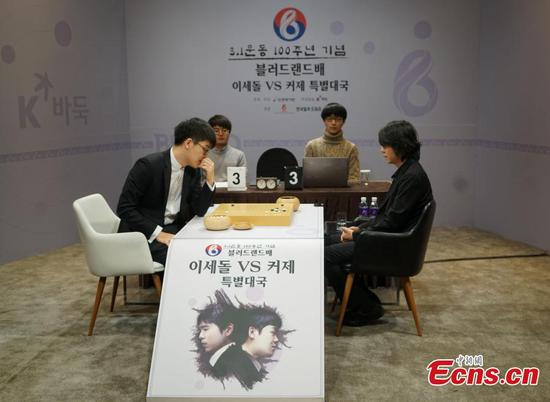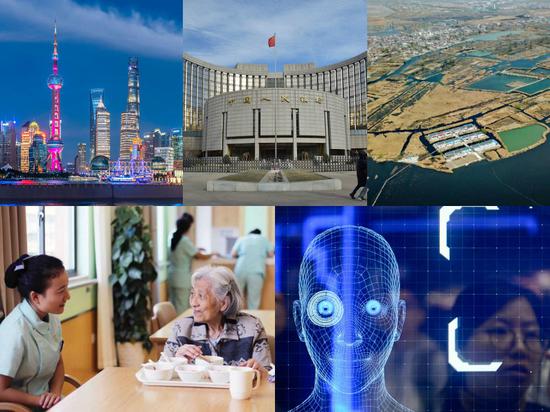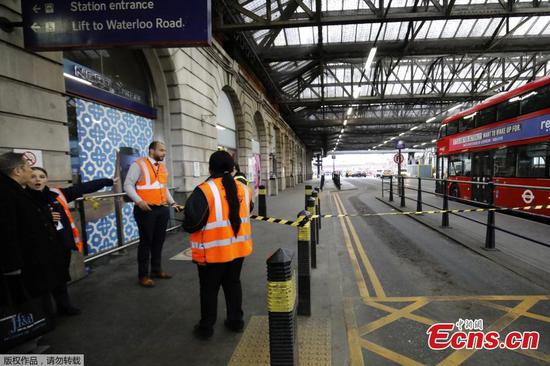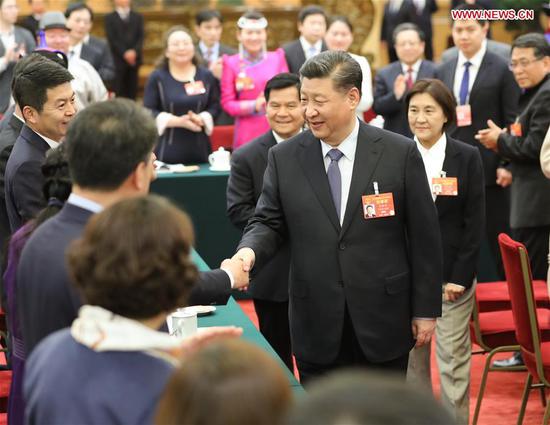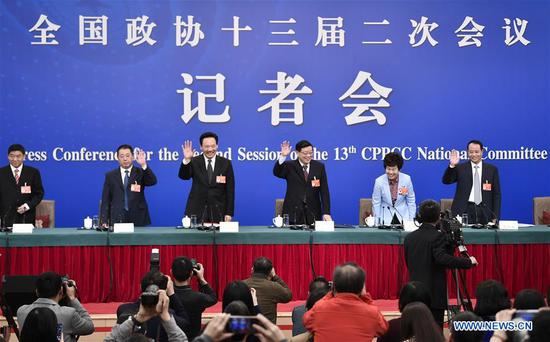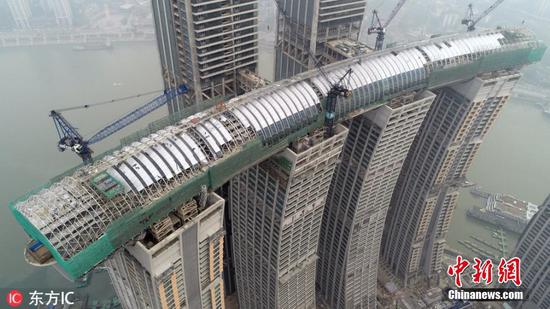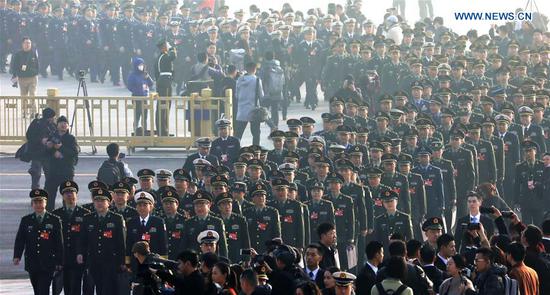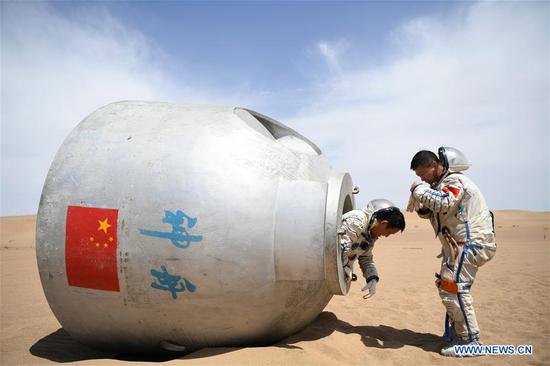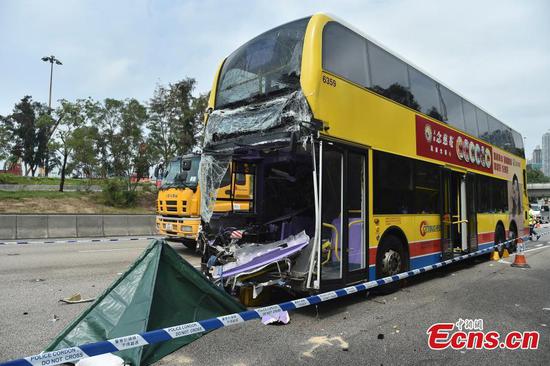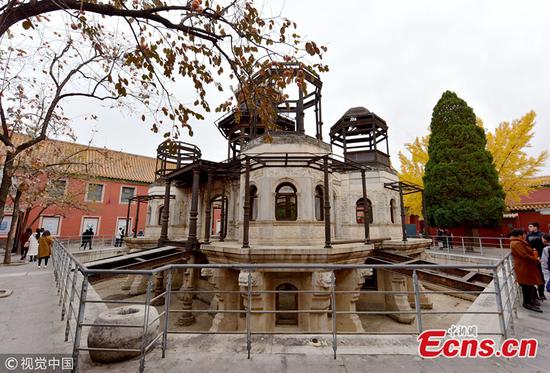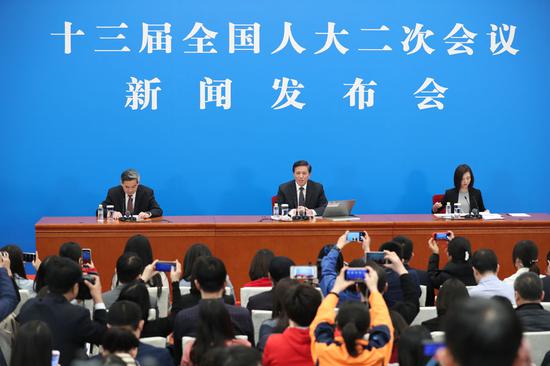
Zhu Wentao, a senior technician in Heilongjiang province, cuts steel wire to one-seventh the width of a human hair. (Photo/Xinhua)
Upgrading the nation's manufacturing sector will require innovative steps to cultivate new talent.
In a modern skyscraper, even a tiny screw or brick is of vital importance, and the same is true of the skilled workers who tighten the last screw in strict accordance with the architect's plan to build a safe, solid shelter.
In China, skilled technicians and engineers, even those recognized as having a high level of competence, were once plagued by low social status, poor conditions and meager salaries. Gradually, though, they have earned respect, in tandem with the rise of the manufacturing sector.
"Highly skilled workers were first classified by the government in 2003. In 2015, they were included as one of the major State-level talent groups, along with theoretical scientists, technological leaders and entrepreneurs, marking a significant rise in their social status," Zhang Lixin, director of the Vocational Capacity-building Department at the Ministry of Human Resources and Social Security, said at a news conference in December.
He said that by the end of last year, the skilled labor force had risen to more than 165 million, with those classified as highly skilled reaching nearly 48 million. The numbers signaled rises of 23 percent and 39.3 percent respectively from 2012.
He Liangping, dean of Yunnan Technician College in Kunming, capital of the southwestern province of Yunnan, said: "The driving force of China's economic and social development has been transformed from labor-intensive industries to quality talent. Against that backdrop, this vast group of skilled workers is key to the nation's future development."
In addition, vocational education and skills training play a key role in improving workers' performance and making the nation a manufacturing power, he said.
Training upgrade
China's earliest modern skills training can be traced to the Qing Dynasty (1644-1911), when the Foochow Shipbuilding Institution in Fujian province was established in 1866, Minister of Education Chen Baosheng told a news conference last year.
However, vocational education lagged behind ordinary high school education before late leader Deng Xiaoping called for the development of more technical schools in 1978, when the adoption of the reform and opening-up policy highlighted a shortage of talented technicians.
As a result, the number of students at vocational institutes rose to more than 4.2 million in 1985, and the number of technical colleges rose by 4.6 percent.
By 1996, vocational students accounted for 56.4 percent of the total in high school education, an all-time record, according to the Chinese Society of Vocational and Technical Education.
More recently, technical education has received greater support from the central government to help shape the nation's manufacturing power. In 2014, the State Council, China's Cabinet, issued a guideline to make modern vocational education more open-minded and flexible as a way of delivering more skilled talent.
Last month, the Ministry of Education issued a plan to reform vocational education and produce high-quality technicians for 10 sectors in urgent need, such as agriculture and manufacturing.
"I was unwilling to send my son to a technical school because of the low social status of skilled workers," said Shao Qian, a 45-year-old from Henan province.
"I thought it would be better for him to attend an average higher education college than become an apprentice in a factory, but I changed my opinion when he won the first prize for welding at the technical college. I discovered things were not that bad; at least, he has mastered a skill that will help him earn a living. I think things will improve because the nation is making efforts to improve the economic and social treatment of skilled workers."
123Next >>|

Jiang Yingcheng represents China during the 44th WorldSkills Competition in Abu Dhabi in 2017. CHINA DAILY
Growing opportunities
Yuan Qiang, gold medal winner in the industrial control event at the 2017 WorldSkills Competition in Abu Dhabi, United Arab Emirates, said: "I can understand parents' concerns. Many of my classmates sought job opportunities in areas such as real estate and insurance because of the higher salaries."
The 20-year-old was employed as a teacher at Shandong Industrial Technician College soon after graduating from the establishment.
"Stereotypically, technicians do the dirtiest work, but receive the lowest salaries and are not respected. However, I still believe we share a promising future because the nation has a great shortage of skilled workers, especially those at the highest level," he said.
Yuan is now coaching six candidates for national trials to select the best competitors for the 45th World-Skills Competition, which will be held in Kazan, Russia, in August.
In the past decade, the government has stressed the need to train more skilled workers to improve the capabilities of the nation's manufacturing sector.
"The developing industries require higher-quality workforces," said Lin Bin, senior engineer at Shanghai Electric Hydraulics and Pneumatics. "Developing the nation into a manufacturing power is not only the business of engineers, but also skilled workers who can turn research into practice."
The call for quality has certainly been heard. For example, since 2012, Beijing has produced 200,000 highly skilled workers, 59 of whom have been recognized as industrial pioneers and have each received a onetime subsidy of 20,000 yuan ($2,984), awarded by the State Council.
Beijing has also developed a skilled workforce through workshops. About 37 State-level and 130 city-level workshops have been put into operation, and the apprentices are taught by the industry's top masters.
Geng Jiasheng, a senior lathe operator with Yunnan Metallurgical Kunming Heavy Industry, runs a workshop in Kunming.
"In 2012, my workshop was designated as a State-level training base by the Ministry of Human Resources and Social Security, and given 100,000 yuan," he said.
The 57-year-old has trained more than 500 apprentices. "We have done a lot of work, including developing new skills, training competitors for skills games and helping to raise levels of craftsmanship. Irrespective of the reputation or financial incentives I receive, it's an encouragement to all of us workers," he said.
Career development
According to the Ministry of Human Resources and Social Security - the nation's top guide for career development - there is still a shortage of skilled workers, which is proving a challenge to the upgrading of the nation's industries.
The ministry said the skilled population numbers about 165 million, accounting for just 21.3 percent of all employees in the manufacturing sector, while there are less than 48 million highly skilled workers.
The shortfall between workforce supply and demand is intensifying as a result of the transformation of the economic development model and technological reforms, the ministry said.
More worryingly, the shortage of skilled workers is gradually expanding from the eastern provinces to relatively undeveloped regions in central and western parts of the country, turning a seasonal problem into a perennial one.
In November, the ministry issued a plan focusing on the development of the skilled workforce to better ensure competence and narrow the gap between supply and demand.
"For the government, producing a skilled workforce involves several factors, including education, evaluation, selection and incentives," said Zhang, from the ministry.
"The fundamental method of narrowing the gap is to cultivate more skilled workers, but it's a hard task for both the companies and colleges. Every skilled apprentice is given an allowance of 4,000 yuan a year, and preferential policies have been made available to help companies produce quality workers."
He noted that vocational education has won great support from the central government.
"Technical colleges have grown into training bases for the most-needed talent. Their employment rate remains at 97 percent, and most of their students have six or seven job offers when they graduate," he said.
"Also, vocational colleges have adapted their courses to serve the advanced manufacturing industries, forsaking the old-fashioned dirty and painstaking stereotypes."
The development of a skilled, next-generation workforce has also attracted the attention of the Ministry of Education and the All-China Federation of Trade Unions to help secure a better environment for skilled workers, both in terms of learning techniques and rights protection.
The ministry and federation said they are working with the Ministry of Human Resources and Social Security to improve the financial and social status of skilled workers.
|<>|

Competitors take part in a welding contest in Changchun, capital of Northeast China's Jilin province, in August. XU CHANG/XINHUA
Strong measures aim to improve training
The government will introduce strong measures to develop modern vocational education in a bid to ease employment pressures and a shortage of highly skilled personnel, according to the Government Work Report, which was delivered on Tuesday.
The report said a vocational skills training initiative will be implemented with 100 billion yuan ($15 billion) in funds, culled from a surplus in unemployment insurance funds, allocated to provide training for a targeted attendance of 15 million. That will help job seekers to upgrade their skills or switch jobs or industries.
The nation will step up reforms and improve examination and enrollment procedures at vocational colleges to encourage more high school students, demobilized military personnel, migrant workers and laid-off employees to apply, with the aim of expanding student enrollments by 1 million.
According to the report, the central government will greatly increase fiscal support for vocational colleges by establishing State scholarships for secondary-level vocational education. Moreover, coverage of scholarships and grants, along with financial assistance, will be expanded for students at vocational colleges.
To raise the quality of vocational education, the government will speed up work to align vocational technical grade certificates with academic qualifications, and reform the management of vocational colleges.
The government will also support businesses and individuals that provide vocational education, the report said.
|<










